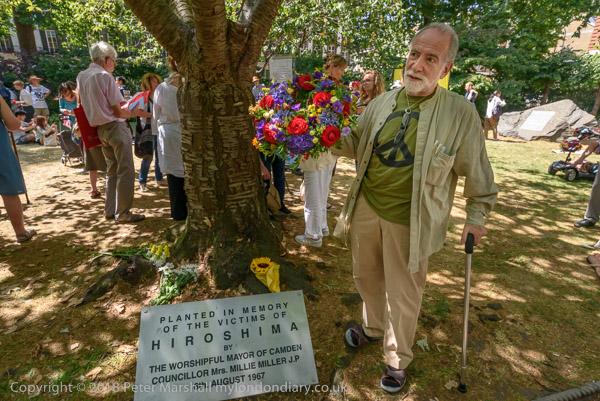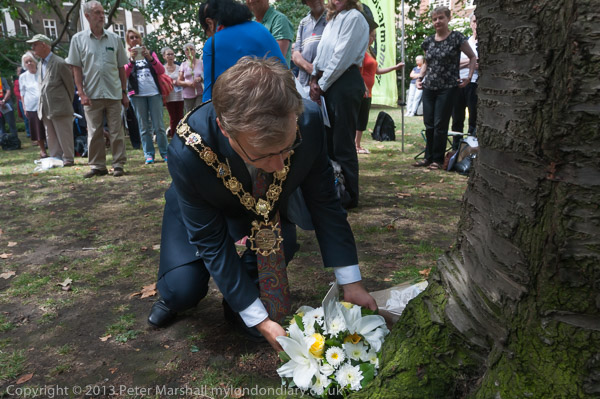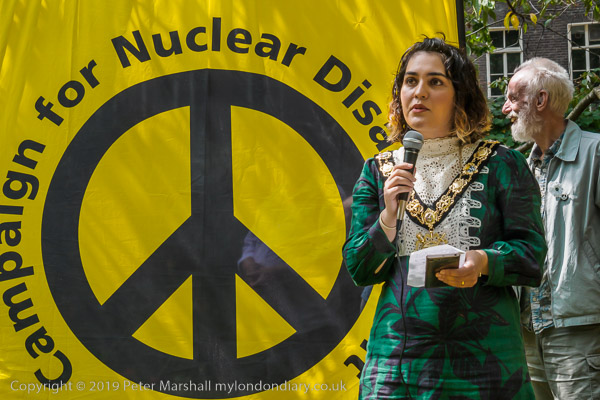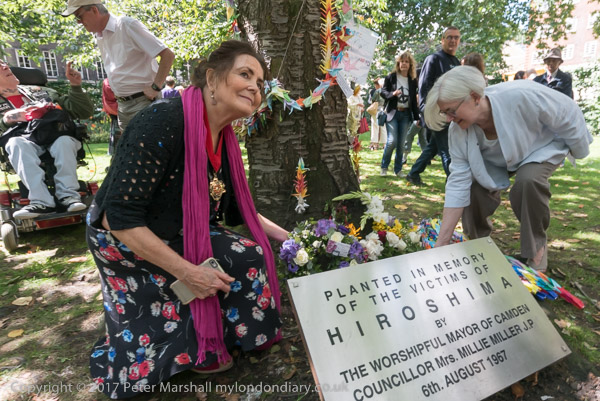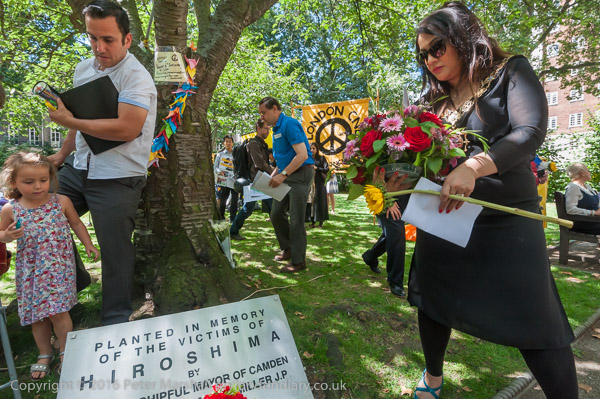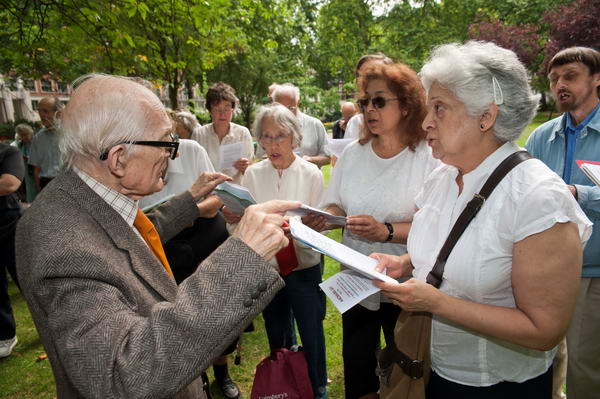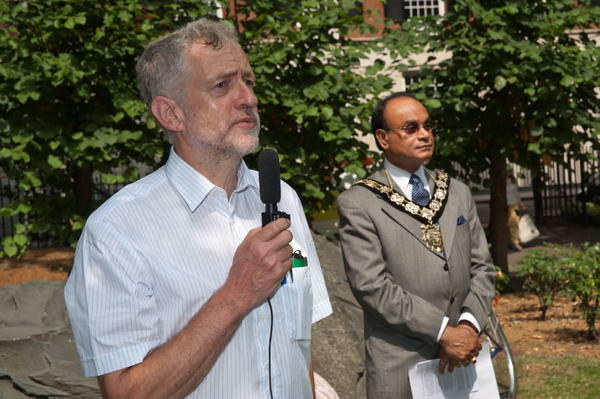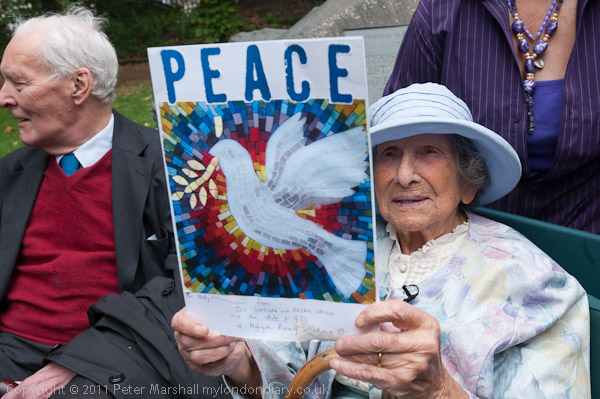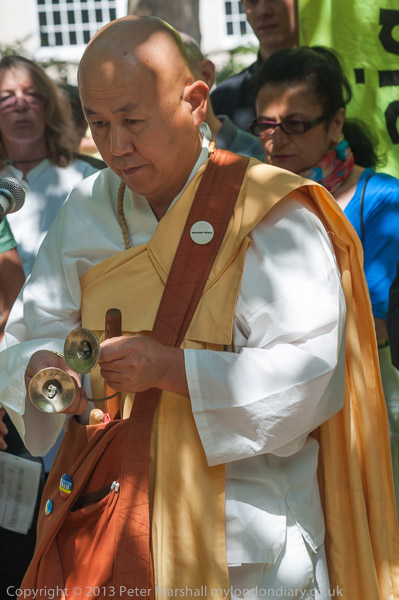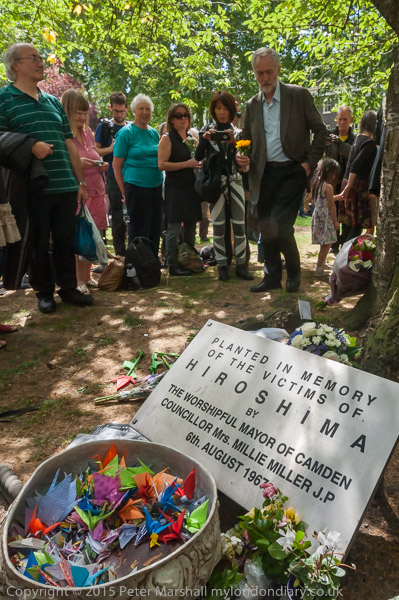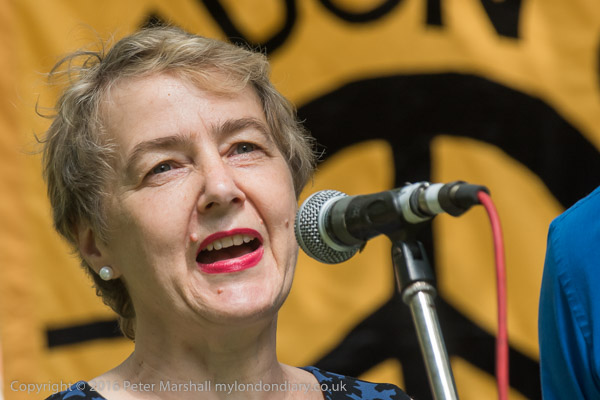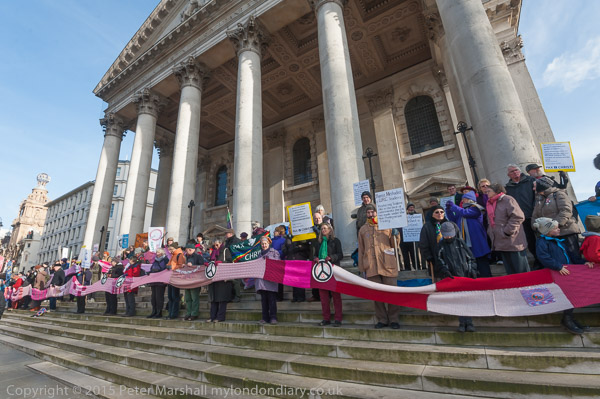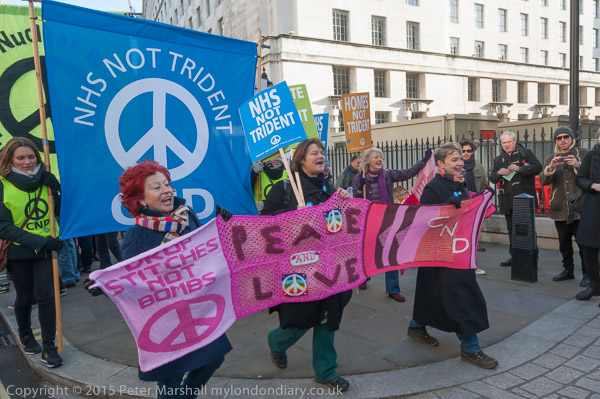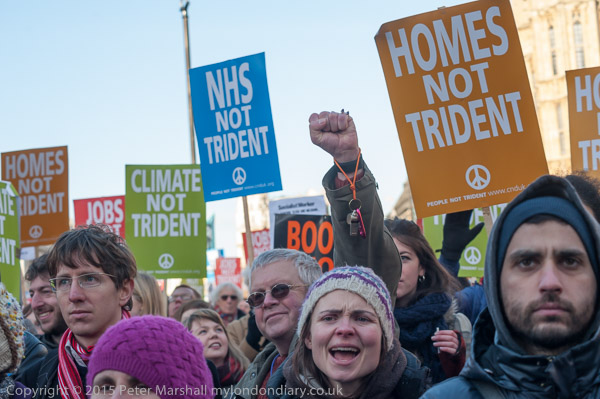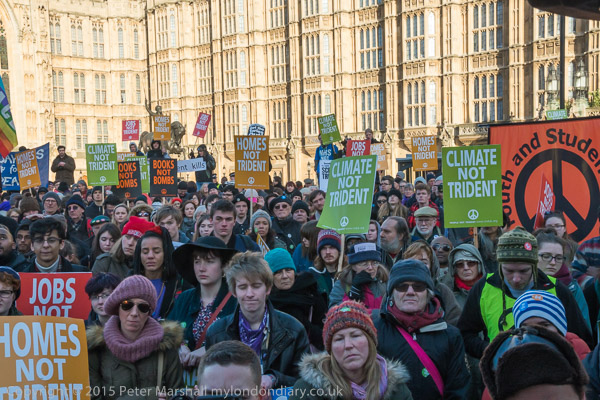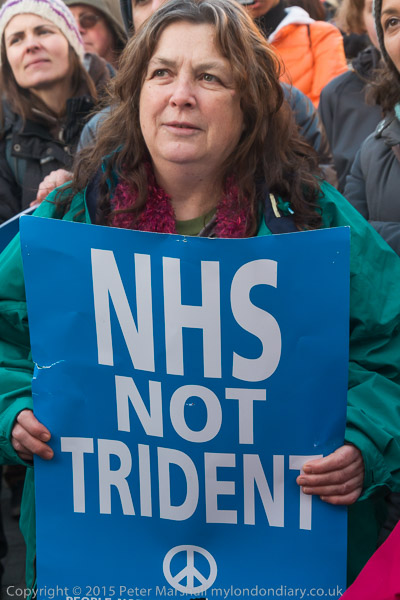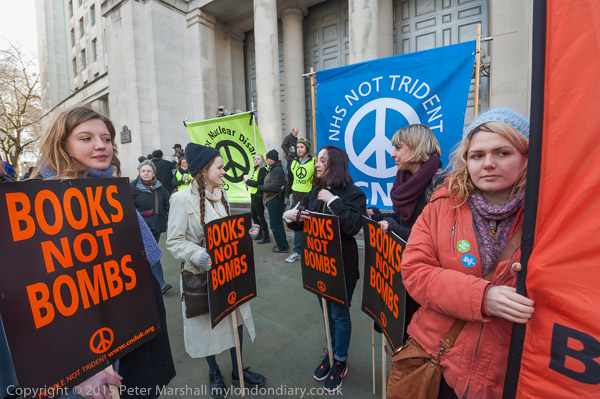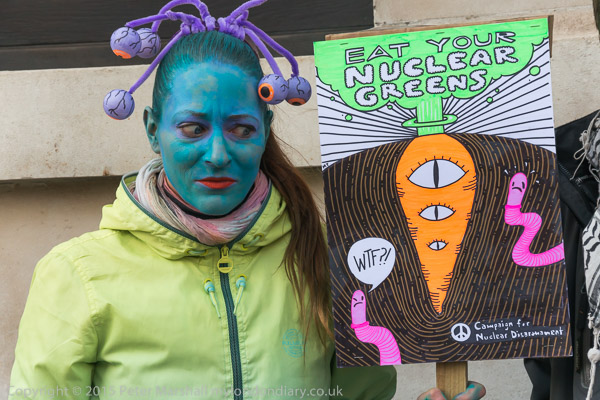Nuclear Fools Day & CND at 60 – Twice in the last ten years, on 1st April 2013 and 1st of April 2018 I’ve got on my bike and cycled to Aldermaston to take part in protests by CND around the UK’s Aldermaston nuclear bomb factory, 12 miles west of Reading.
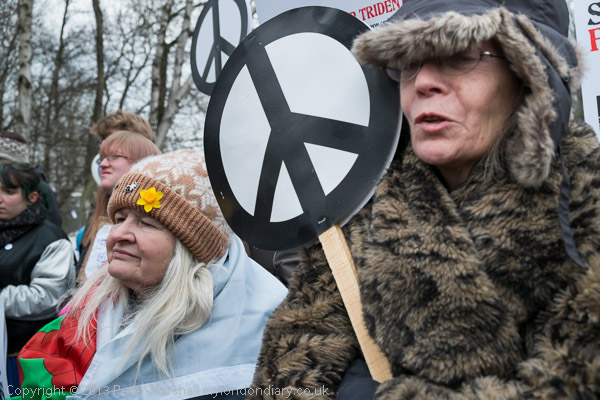
I wasn’t there for the first big Aldermaston March in 1958, though one of my older brothers went, and I remember him coming back rather tired and muddy but please he had managed the whole 4 day march. CND had then just been formed and supported the march organised by the Direct Action Committee Against Nuclear War and the next year they began a series of annual marches, marching from Aldermaston to a rally in Trafalgar Square.
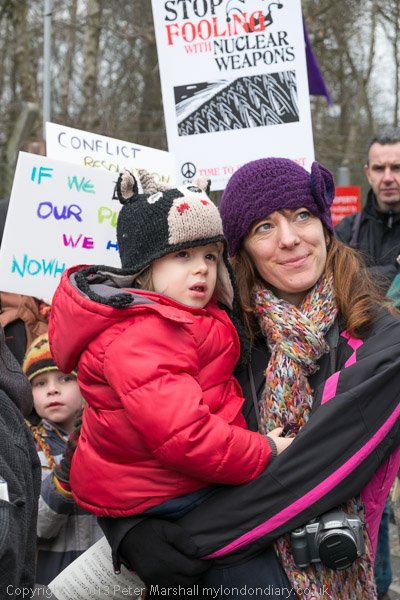
The annual marches continued until 1963, and in 1964 there was just a one-day march in London which I think I may have taken part in, though by then I was a student and I don’t recall well which of many demonstrations I took part in during the sixties. I didn’t keep a diary and couldn’t afford to take photographs then. There was a shorter march in 1965 from High Wycombe and the march in the original direction to Aldermaston was revived in 1972 but with fewer marchers taking part. And a number of marches and rallies in London since then which I did photograph.
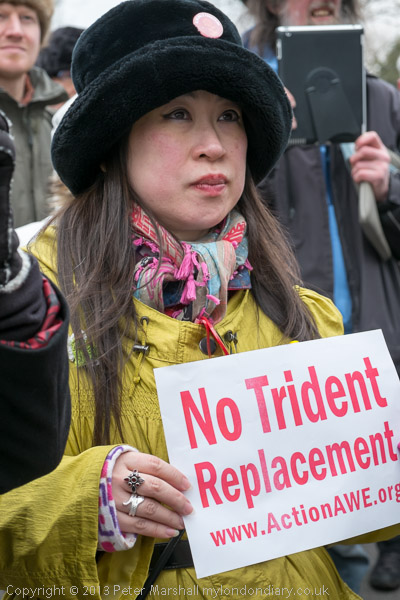
The next revival of the march I think took place in 2004, and on that occasion I photographed the rally in Trafalgar Square at the start of the march on Friday 9th April and marched with around 2,300 to Hyde Park but left the around 430 of who set off to spend the night in Reading. I got on my bike on the Sunday to meet them again at Maidenhead, walking with them to their lunch stop at Knowl Hill, from where I walked back into Maidenhead to pick up my bike and ride home.
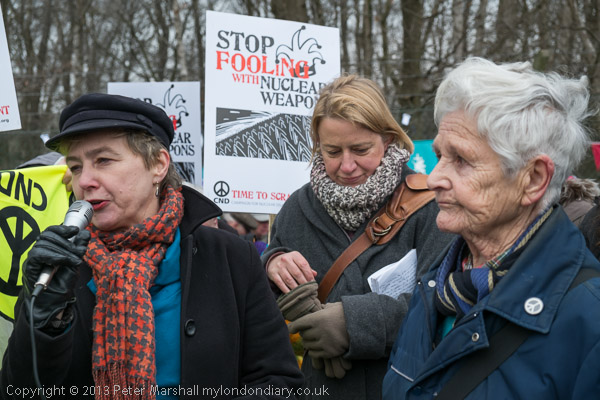
On the Monday I was up early to catch a train to Reading where the final leg was starting with my wife and elder son. I didn’t feel I could walk the 12 miles with my usual heavy camera bag so took along just my Canon Digital Ixus 400, (aka PowerShot S400), an ultra-compact and light camera with a 36-108mm equivalent lens giving remarkably sharp 3.9Mp images, although the autofocus wasn’t always precise. You can view a large number of pictures from 2004 on My London Diary
The pictures on this post come from two more recent events, the Nuclear Fool’s Day – Scrap Trident rally at Aldermaston on Easter Monday, 1st April 2013 and CND At 60 at Aldermaston on Sunday 1st April 2018. On both occasions I cycled from Reading station the 12 miles there carrying my normal camera equipment. I think I was a little tired when I got there on both occasions, and perhaps not working at my best. The ride back was a little easier as it is downhill much of the way.

In 2013 there were protests all around the extensive site and the bike enabled me to get around and take pictures of the protesters at each of half a dozen gates around the over 5 miles of the site perimeter, as well as of people walking around and attaching messages and banners to the tall security fence.

The speakers were also travelling from gate to gate, but in a couple of cars and a lorry and among those I heard and photographed were CND Vice-Chairs Jeremy Corbyn MP and Bruce Kent, CND General Secretary Kate Hudson, Green Party Leader Natalie Bennett and South East Green MEP Keith Taylor, Stop the War’s Chris Nineham and CND founding member Pat Arrowsmith and another veteran Walter Wolfgang, as well as US activist Linda Pentz Gunter, the founder of ‘Beyond Nuclear’.
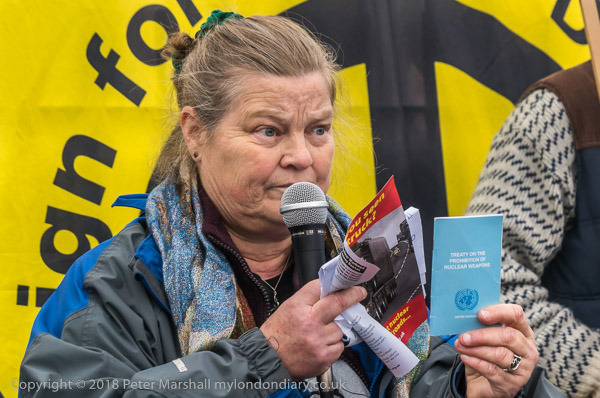
The 60th anniversary event in 2018 was easier to cover as it took place mainly in the Atomic Weaopons Establishment Car Park close to the Main Gate and on the fence close by, so I didn’t need to ride around the area, parts of which are rather hilly. As well as 60 years of campaigning by CND it celebrated the UN treaty banning nuclear weapons, finalised last year and signed by 122 nations, for which ICAN, the International Campaign to Abolish Nuclear Weapons, of which CND is a part was awarded the Nobel Peace Prize. Something that went almost unnoticed in the British media.
More at:
2004 on My London Diary
Nuclear Fool’s Day – Scrap Trident
CND At 60 at Aldermaston
